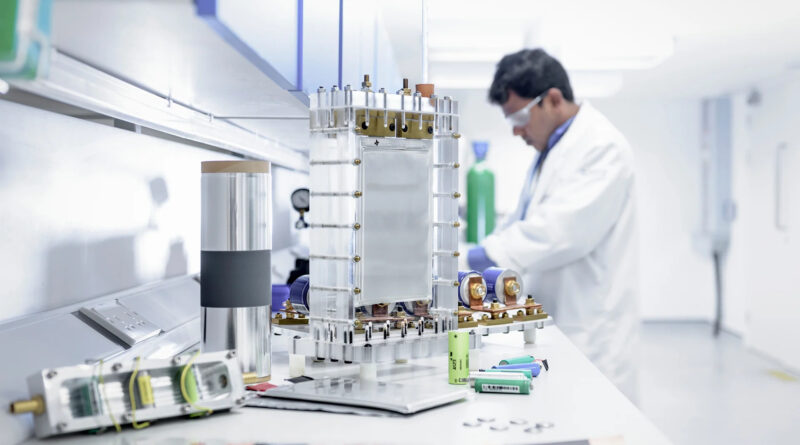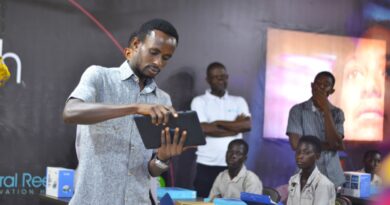Scientists used AI to build a low-lithium battery from a new material that took just hours to discover
An artificial intelligence (AI) program has identified a material not found in nature that could reduce the amount of lithium used in batteries by up to 70%.
The new material, a blend of sodium, lithium, yttrium, and chloride ions, is a type of mixed metal chloride and was found to be the best option of 32 million candidates.
Lithium is the main component in rechargeable batteries, and demand for the metal has skyrocketed in recent years. However, the mining process to obtain the element is particularly energy-intensive and often causes lasting water and land pollution. It means many companies are looking for alternative materials from which to build batteries.
The Pacific Northwest National Laboratory (PNNL) collaborated with Microsoft to do just that. Using Microsoft’s Azure Quantum Elements tool, researchers screened potential new materials that can be used in low-lithium batteries. The scientists published their findings on Jan. 8 on the pre-print server arXiv.
Building a new type of battery
Batteries work by shuttling charged particles back and forth between positive and negative terminals, known as electrodes. When wires are connected, lithium ions move from the negative electrode, through a conducting substance called the electrolyte, toward the positive electrode. Meanwhile, electrons travel in the same direction through the wires, enabling energy to be drawn from the battery.
For this study, the researchers focused on solid electrolyte materials which scientists hope to develop into a safer and more efficient alternative to current liquid electrolytes. Crucially, the electrolyte material must be compatible with the electrodes and allow lithium ions to easily pass through it while completely blocking the movement of electrons through the battery.
They began with more than 32 million possible candidates — generated by swapping different elements into existing electrolyte structures — and used a combination of AI techniques to filter the materials based on their properties.
“A lot of the candidate materials which are generated with these theoretical computer calculations are actually not stable enough for you to make them in the laboratory, so their first step was to filter by stability,” Kandler Smith, a mechanical engineer from the National Renewable Energy Laboratory, told Live Science. This initial screen took them from 32 million to half a million materials in a matter of hours.
The team then selected nine other criteria and used AI to sequentially apply them, sorting the candidates by their electronic properties, cost and strength to narrow the pool to 18 finalists. “I was very impressed that they achieved all this with just 80 computer hours — it would have taken 20 years to screen through all those materials experimentally,” Smith said. “Their machine learning pipeline, combined with the physics-based models of molecular dynamics, is a huge gain and will really speed up research.”
The researchers synthesised a series of these final materials, which contained lithium, sodium, the rare earth element yttrium, and chloride ions in varying proportions. Interestingly, this mixture of lithium and sodium allows the material to conduct both types of ions—something previously believed impossible—and could also work in sodium-ion batteries. In particular, one of the high-sodium variants contained 70% less lithium than a conventional battery, which could drastically reduce the price and environmental impact of these batteries in the future.
A starting point for AI-powered material discovery
The team then tested the candidates’ electronic properties. “The ionic conductivity—how fast the lithium ions can move—is the key property for an electrolyte and determines how quickly you can charge the battery. That’s crucial for electric vehicles,” explained Smith.
Conventional lithium-ion batteries use a liquid organic solvent electrolyte that lets ions travel quickly, translating to fast charging times. But the solvents are flammable, and side reactions with the electrodes degrade the battery over time. “Solid-state electrolytes have the advantage that they are more chemically stable and much less flammable. The downfall is that they don’t move the lithium ions as quickly, so the charging times are slower,” Smith said.
The top-performing candidate the AI identified was an order of magnitude less conductive than today’s liquid electrolytes—that’s the difference between a charge time of 30 minutes and five hours—so the electronic performance of the material will need improving before it becomes suitable for practical applications. That said, the researchers did build a working prototype from the final material and used it to power a lightbulb, Microsoft representatives told Live Science in an email.
Smith believes it’s an excellent starting point. But streamlining material discovery using AI was the most impactful achievement of the work, he explained, and the same machine learning pipeline could support research in hundreds of other related areas.
This is something both Microsoft and PNNL are keen to explore in the future. “The new battery results are just one example—a proof point if you will,” Brian Abrahamson, PNNL’s chief digital officer, said in a statement. “We recognized early on that the magic here is in the speed of AI assisting in the identification of promising materials and our ability to immediately put those ideas into action in the laboratory. We plan to push the boundaries of what’s possible through the fusion of cutting-edge technology and scientific expertise.”
Source : yahoo.com




